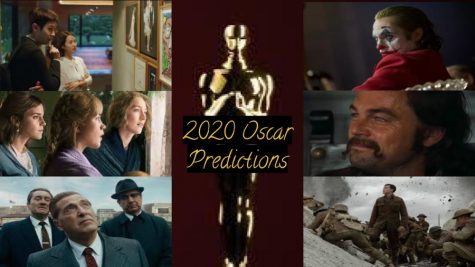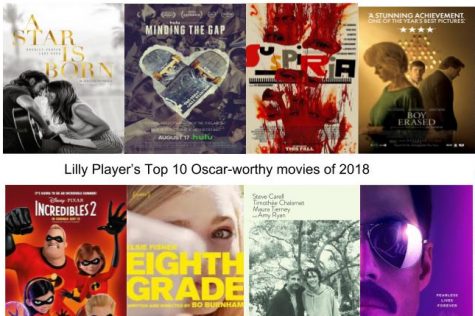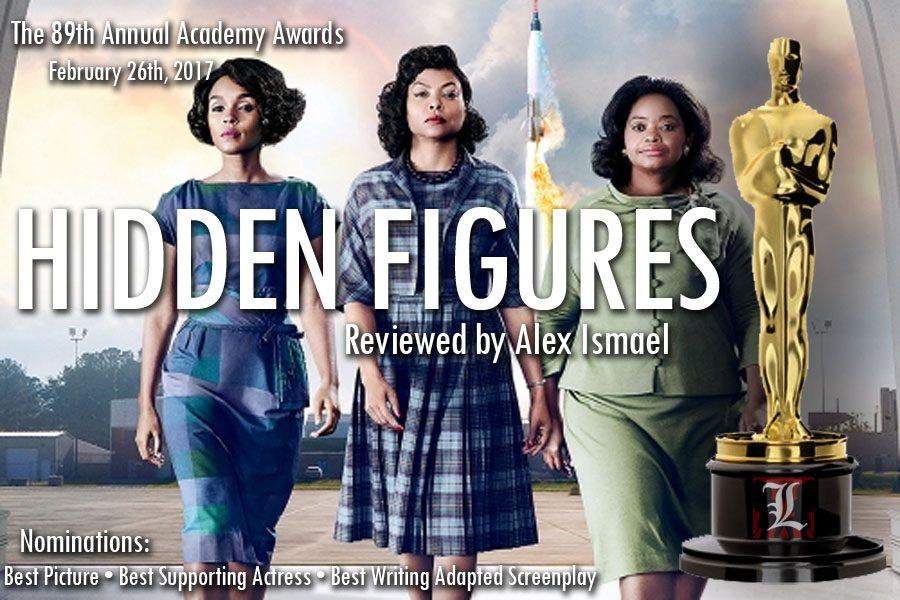See Oscar nominee Hidden Figures: You’ll never complain about math again
Hidden Figures, directed by Theodore Melfi is a historical drama based on the true story of three African American women who worked at NASA as human computers. It was nominated for Best Picture, Best Actress in a Supporting Role (Octavia Spencer) and Best Adapted Screenplay.
I believe this movie should win all three of these awards because it is a very powerful and emotional piece that tells about the crucial roles of women at NASA who helped create successful missions. The world may not have been aware of these women before this book and movie, and it is important to show how their work is both important and difficult to come by.
It also made me realize that I should not complain about my math classes again because these women did a lot more math than I ever plan to do willingly.
The story takes place in the 1960’s in the Southeast corner of Virginia at the Langley Research Center. The women leading in the film had to face many challenges in the workplace, mainly a hostile, sexist and racist atmosphere.
Hidden Figures is definitely worth winning the Oscars for Best Picture, Actress in a Supporting Role and Adapted Screenplay. The story being set in the 1960’s is an interesting challenge to take on for a movie setting. Every piece of the set and the technology has to be believable.
I enjoyed seeing working cars, clothing styles, NASA technology, everyday products and household items all from the 1960’s. Buildings, workspaces and classrooms had to be recreated. This is an interesting task because of the uniqueness of architecture, design, materials, patterns, fonts and colors found in the 1960’s.
The three main characters are portrayed very well. The actresses showed the struggles and frustrations their characters faced every time a new or unfair challenge surfaced.
Katherine Goble Johnson (Taraji P. Henson), Dorothy Vaughan (Octavia Spencer) and Mary Jackson (Janelle Monáe) start as human computers at NASA. In short, they do all of the mathematical calculations needed for the space program.
In this day in age with computers doing everything, from driving cars to tracking our health data to designing the future, this historical drama opened my eyes to how far technology has come.
Katherine Goble Johnson (Taraji P. Henson) is the lead of the story out of the trio. At NASA, she started as a human computer but was eventually promoted to working on the cutting edge technology as it streams in, the Space Task Group. One of the biggest struggles she had in this position was having to walk half a mile outdoors to get to a bathroom she is allowed to use. The demanding workload and the rude, sexist and racist atmosphere of her coworkers was also not very encouraging.
I noticed that the actors who had to be racist characters almost had an uncomfortable appearance while playing the characters, as if they were unsure how to act racist. I’m not sure if this was a problem in the acting or the actual feelings back when the oppressive Jim Crow laws exsisted. Were people unable to back up racism and find reason to act on it, citing history as good enough reason? The actors looked as uncomfortable as viewers feel when they come in contact with this sad history.
Back at the West Computing Group, Dorothy Vaughan (Octavia Spencer) started out as a computer also. A new machine, called the IBM 7090 DPS (Data Processing system) (basically an early computer that took up an entire room), was purchased by NASA and Dorothy Vaughan understood that this was the way of the future. She taught herself FORTRAN (programming for the IBM) and became an expert in it. Eventually, she taught the other women in the West Computing Group, causing their jobs to be reassigned from manual computing to the IBM permanently.
Finally, Mary Jackson works to become an engineer, but rules prohibit her to become one. She takes the case to court and is allowed to get the education necessary to become the first woman engineer at NASA.
Other than the acting and details, over all I think this film deserves Best Picture because quality of the story and cinematography. There is this emotional connection that grows throughout the film and you feel the passion and struggle, love and hate through the characters. Not all films do that.
A great element in this movie is the music. Pharrell Williams, Hans Zimmer and Benjamin Wallfisch are the main three artists who worked on the soundtrack (lyrical songs done by popular artists) and original score (the instrumental music that you may not even realize is there, but contributes to making a scene emotional).
I enjoyed the use of a theme from the opening scene, in a piece called “Katherine”. This musical theme recurs throughout the soundtrack and the movie, in some augmented or altered form. This helped to bring unity to all of the scenes and helped grow the story of the main characters.
In total, the movie is a stunning piece of work that combines a true untold story coupled with a great source of inspiration. The setting was recreated very well, the stories told were entertaining, emotional and you just feel so proud of these women every time they have a success. Though not nominated for an award, the soundtrack is a masterpiece and the cinematography and animated space scenes are gorgeous.
I would recommend this movie very much, catch it while it is still in theaters!
Your donation will support the student journalists of Linganore High School. Your contribution will allow us to purchase camera/recording equipment and software. We hope to raise enough money to re-start a monthly printed issue of our paper.






